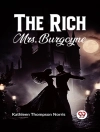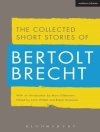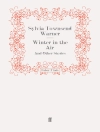In ‘Christmas Roses and Other Stories, ‘ Anne Douglas Sedgwick weaves a enchanting tapestry of narratives that reflect the complexities of human emotions, particularly during the festive season. The collection features beautifully crafted prose that oscillates between the poignant and the whimsical, showcasing Sedgwick’s adeptness at illuminating the subtleties of personal relationships and societal expectations. Set against a backdrop of early 20th-century life, her stories echo the era’s challenges and triumphs, rendered with a lyrical quality that invites readers to both reflect and revel in the season’s spirit. Sedgwick, a notable figure in the early 1900s literary scene, was deeply influenced by her upbringing in a family that valued artistic expression. Her experiences living in England and her connection to the Transatlantic literary circle enriched her understanding of cultural dynamics, which are evident in her storytelling. These backgrounds fueled her desire to explore themes of love, loss, and redemption, making her insights particularly resonant in this collection. For readers seeking a refreshing perspective on the holiday season, ‘Christmas Roses and Other Stories’ offers a delightful blend of compassion, nostalgia, and insightful commentary. Sedgwick’s evocative tales are perfect companions for those wishing to experience the warmth and intricacies of human connection, making this work a recommended read for any lover of literary fiction.
Sobre el autor
Anne Douglas Sedgwick (1873–1935) was an American-born British writer whose literary career spanned the late 19th and early 20th centuries. Bridging two cultures, her works often explored the complexities of Anglo-American relationships and societal norms. Born in Englewood, New Jersey, Sedgwick moved to London at a young age, which greatly influenced her writing. Her oeuvre is marked by its nuanced character development and insight into human psychology, traits that earned her a respected position among contemporary writers of fiction.
Sedgwick’s ‘Christmas Roses and Other Stories’ showcases her deft narrative skill and delicate prose. Through short stories, she provides a vivid exploration of human emotions and relationships, often delving into the themes of love, duty, and social expectations. Sedgwick’s literary style is characterized by its elegance and clarity, making her work accessible yet profound—qualities that helped her achieve popularity in both the United States and England. Her work is a testimony to her acute observational powers and her ability to articulate subtle social dynamics of her era. While not as widely remembered today as some of her contemporaries, Sedgwick’s contributions to early 20th-century literature continue to be appreciated by scholars and readers seeking to understand the transitional period between Victorian and modernist sensibilities.












